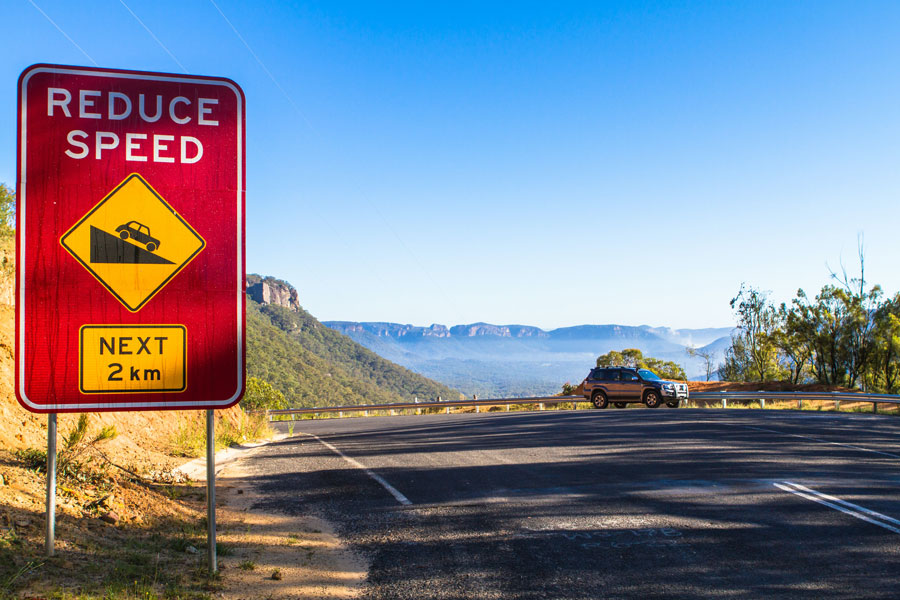What is an advance warning sign?

Advance warning signs are deployed to warn motorists and pedestrians of hazardous conditions ahead.
They must conform to the relevant transport authority in the state or territory, and they come in a range of formats, from pictures to text to active lighting. They promote safe driving, improve traffic flow and are shown to reduce traffic accidents.
Why use advance warning signs?
Advance warning signs provide motorists with time to adjust their driving before encountering challenging conditions. They may prompt drivers to adjust their speed, lane-changing habits, or distance between them and other vehicles. They are demonstrated to increase focus and attention to the road.
Although advance warning signs are often used to indicate less than ideal motoring conditions, they can actually improve traffic flow.
Because motorists have additional time to consider the adjustments they might have to make to which lane they are in, if they need to stop, whether to expect merging traffic or if they are expected to exit at a different location, the overall traffic flow is impacted far less than in the absence of these cues.
When to use advance warning signs
There are many situations where advance warning signs may be appropriate. Generally speaking, they are required wherever conditions require a higher level of driver caution.
They can be used to indicate roadwork, reduction or increase in the number of lanes, lane closures, where detours are necessary, entire road closures, or in the event of emergencies such as floods or bushfires.
They can also be used to advise pedestrians of changed conditions, such as footpath closures, changed crossing conditions, and when pedestrians and vehicles are required to share access to an area.
The different types of advance warning signs
For short term applications, you could use rigid or roll-up signs. These are especially practical when providing signage for mobile roadworks as they are easily moved and redeployed. Permanent advance warning signs are appropriate when motorists will benefit from additional caution at all times.
Examples of these signs are where there are speed humps, roundabouts, school zones, elderly or school crossings, challenging corners, the likelihood of frost, water or ice on the road, intersections, stock on the road, and wildlife warnings. Where
motorists are required to stop at temporary traffic lights, where motoring conditions are especially challenging, or where workers on foot are deployed close to traffic, it is advisable to use active advance warning signs, also known as AAWSs.
The “active” refers to the fact these signs are dynamic; capable of changing automatically, on a timer or via a manual control. An automatic AAWS might be a flashing sign on an endless loop. A timed or manually controlled AAWS might be temporary traffic lights used to control traffic flow where only one side of the road is open, but traffic needs to pass in both directions.
How to use advance warning signs
Wherever you use advance warning signs, it is important to consider their general visibility.
Questions you might ask yourself are:
- Are they mounted high enough?
- Are they concealed by other signage or obstructions such as foliage or buildings?
- Will they be visible at all times of the day, or are they likely to be affected by glare?
It is recommended that signage is placed so that it is at right angles to the direction of oncoming traffic and as vertical as possible to increase visibility and reduce reflections or glare from sun or headlights.
They may be mounted on barricades, posts or vehicles and be stationary or moving. A series of advance warning signs are recommended, such as a three sign series, where the impact on traffic increases over distance.
An example of this might be directing three lanes of traffic to merge into one, where the first stage is a merge into two lanes, followed by a merge into a single lane. When using a series of signs, it is important to space them so that motorists have adequate time to read each one before being faced with another.
Additionally, consideration must be given to entering and exiting traffic to ensure all motorists have the opportunity to view the signs before being impacted.
In conclusion, advance warning signs are a necessary part of traffic control and ensuring pedestrian safety.
Buy your advance warning signs at Jaybro
Jaybro provides thousands of theses signs every year across Australia and New Zealand. Our signs comply with each area’s relevant transport authority, and we can fabricate custom designs to suit your unique requirements.
 Sign In
Sign In 

